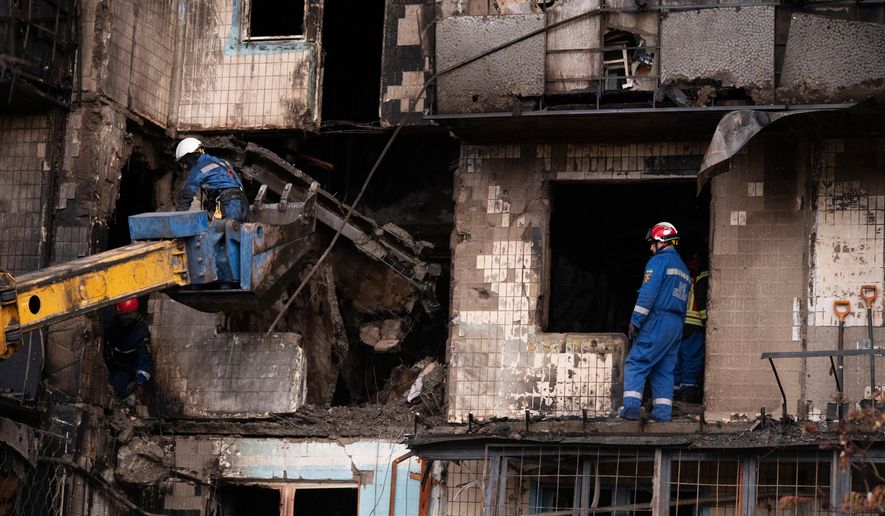Russian drones hit Ukraine’s capital early Sunday, killing three people and injuring almost 30 — the second consecutive nighttime attack on Kyiv to kill civilians.
Ukrainian President Volodymyr Zelenskyy said Russia “launched more than 100 drones” into the city overnight. “Every Russian strike is an attempt to inflict as much damage as possible on ordinary life,” he posted on X.
The Russian Defense Ministry has not acknowledged the civilian casualties.
A 19-year-old woman and a 46-year-old woman were killed and several children were injured, according to Ukrainian Interior Minister Ihor Klymenko.
The Russia-Ukraine war is at a critical point after a week of mixed signals between the White House and European leaders over front line territorial demands by Moscow and potential ceasefire negotiations.
A statement signed last week by Mr. Zelenskyy and the leaders of nine other countries says “the current line of contact should be the starting point of negotiations,” a departure from President Trump.
A statement by European leaders, including Britain, France, Germany and Italy, pushed for increased pressure on Russia.
“Ukraine must be in the strongest possible position — before, during and after any ceasefire,” the statement says. “We must ramp up the pressure on Russia’s economy and its defense industry, until [Russian President Vladimir] Putin is ready to make peace.”
Mr. Trump has stressed in the past that territory could be negotiated after a ceasefire is reached. He noted last week on Air Force One that “78% of the land is already taken by Russia,” seemingly commenting on the Donetsk region of Ukraine.
“They can negotiate something later down the road,” the president said.
The current front lines cut through the Ukrainian regions of Luhansk, Donetsk, Zaporizhzhia, Kherson and others, according to maps published Saturday by the Institute for the Study of War.
A key consideration in the messaging between the U.S. and Moscow is outlining control of the contested regions after a ceasefire. Mr. Trump recently canceled a summit with Mr. Putin, saying he didn’t want “a wasted meeting.”
Mr. Trump said the cancellation did not change his consideration to possibly provide Tomahawk cruise missiles, capable of striking Moscow, to Ukraine for the war effort. In a meeting with British Prime Minister Keir Starmer on Friday, Mr. Zelenskyy asked for the ability to hit back at Russia, a reference to the missiles.
Russia has communicated to Washington that any offer of Tomahawk missiles would slow the peace process. Mr. Trump said Saturday that he does not intend to meet with Mr. Putin until he thinks there is a real opportunity for peace.
“I’m going to have to know we’re going to have a deal,” Mr. Trump told reporters after a meeting in Qatar. “Not going to waste my time.”
Efforts to destabilize Russia’s war economy have gained traction, though not in all areas.
Mr. Zelenskyy said there are “significant results” from the U.S. and European Union sanctions against Russia. The oil sanctions imposed by the EU and U.S. governments have so far been the largest move economically to impact the Russian war footing. Those sanctions have yet to produce a change on the battlefield.
The European Union has so far been unable to leverage frozen Russian assets to support Ukraine. The long-running effort to use those assets stalled Thursday, as leaders from the 26 EU countries did not finalize the plan, instead agreeing to return in December to continue the discussion.
• John T. Seward can be reached at jseward@washingtontimes.com.




Please read our comment policy before commenting.